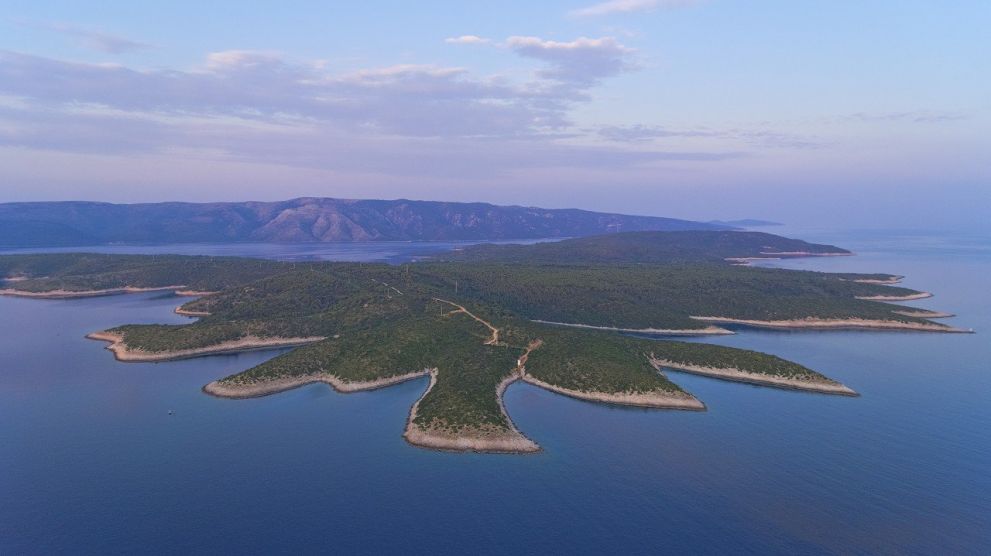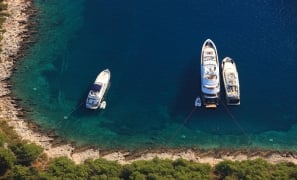Think you know all the sights to explore on Hvar? Don't be so sure!
While most tourists know about the oldest public theatre in Europe, the fabulous Pakleni Islands and the Spanish Fortress, there are many more things worth seeing which get much less attention from tourists (and which even some locals do not know about). Here are five:
1. The oldest olive tree on Hvar (and quite probably one of the oldest in the world)
The oldest olive tree in Croatia is said to be in Kastela, a majestic wonder of nature sitting in splendid isolation off the main road to the airport from Split at about 1700 years old, but one of Hvar's least visited treasures is even older, it is claimed.
Under protection since 1964, Italian experts dated a majestic olive tree close to the eastern village of Zastrazisce at about 500 years before Christ. If true, it would make it one of the ten oldest olive trees in the world, and yet hardly anyone on the island knows of its existence. Measuring an impressive 5.1 metres in diameter, the tree still bears fruit, althogh the owners are not allowed to prune it due to its protected status. Finding the tree is impossible without help, but a good place to start is the Rubin olive mill in the middle of the village, where excellent olive oil, honey and other home-made products are for sale, and the owner can be persuaded to take you the short journey to this amazing tree.
2. The Roman mud bath at Vlaka
The Pakleni Islands are a magnet for tourists, and with good reason. Palmizana, Carpe Diem Beach, Jerolim are all major attractions, each with their own individual offer, but there is plenty more to discover on these emerald jewels. How about a visit to a Roman mud bath, for example?
Vlaka is a small settlement on the northern coast of the main Sveti Klement island which is also home to Palmizana and the ACI marina, and in many ways it is the most fascinating place. For here you can find the lowest vineyards in Croatia, just 1 metre above sea level, as well as one of Dalmatia's best restaurants (Dionis) ad Roman heritage aplenty, from an original Roman wall from a villa rusticae some 2000 years ago, to a muddy bay, whose healthy mud was used by the Romans, and which several locals still swear by today. There are daily water taxis to Vlaka in the season, a wonderful day out.
3. Tito's Tunnels
The most famous tunnel of all of course is the magnificent Pitve tunnel, carved out of rock some 50 years ago, and surely one of the great undiscovered film sets of Europe. Head to the top of the Kabal peninsula above Stari Grad, and an altogether different tunnel experience awaits.
You can get a clue from the ferry as it enters the Stari Grad Channel on the daily ferry from Split. As you enter, look out on the left had side adn you will be able to see some turrets sticking out - a defensive mechanism ordered by Tito. To get there by land, simply drive through Velika Rudina about 12km to the top of the peninsula. A sign for the tunnel is marked on some rock, and then enter the tunnel used by the island's defenders in the Tito era. Bring a picnic, the sunsets are fantastic.
4. The lavender museum
Still in the planning but guaranteed to be open next year, the lavender island finally has its own lavender museum, a momument to this important part of island heritage. Located in the heart of the UNESCO World Heritage Site, the Stari Grad Plain, the new lavender museum is part of Agroturizam Pharos, one of the most successful recent additions to Hvar tourism. And there is plenty of lavender too, with an entire field planted last year which should be coming into aromatic bloom in June.
5. The oldest Plavac Mali vineyard in the world
Fallen in love with Hvar wines yet? The dominant red, Plavac Mali, is a relative of the more famous Zinfandel, and is the pride of Dalmatian wines. A devastating attack of phylloxera in the 19th century decimated the vineyards of Dalmatia, including Hvar, leading to mass emigration. To put it in perspective, Hvar used to have 5,700 hectares of vines under cultivation, whereas today there are only 280.
While phylloxera wrought havoc, vines on sandy soil were resistant to the disease, and just off the main Stari Grad to Jelsa road as you turn for Dol, there is one neatly arranged vineyard with a sandier soil whose vines all have white tags. They were inserted by an academic from Zagreb who researched the Plavac Mali vines which survived and declared this vineyard to be the oldest Plavac Mali vineyard in the world, dating back to 1868.
The vineyard is very hard to find without help, but well worth a visit on one of the excellent Hvar wine tours on offer. Please contact us for more details.
*Author - Paul Bradbury
*Photo Credit - Rafael Janic Photography




